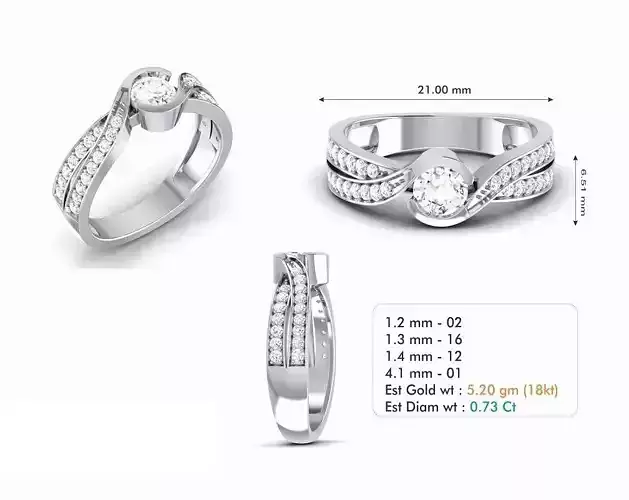
R-7010 3D model
Designing jewelry is a creative and intricate process that combines artistic flair, technical skills, and an understanding of materials. Here's an overview of the steps involved in jewelry design:
Inspiration: The design process typically starts with inspiration. This can come from various sources, including nature, history, art, culture, or personal experiences. Designers often keep sketchbooks or mood boards to collect their ideas.
Research: Once inspired, designers conduct research to gather more information about the style, historical context, and cultural significance of the jewelry they want to create. This phase helps in refining the concept.
Concept Development: Based on the inspiration and research, designers create a concept for their jewelry piece. This includes determining the overall style, shape, materials, and intended audience for the piece.
Sketching: Designers put their ideas on paper by sketching rough designs. These sketches are usually simple and serve as a visual guide for the initial design. They can be created on paper or digitally using design software.
Technical Drawings: After finalizing the sketch, designers create technical drawings that provide detailed specifications for the piece. This includes exact measurements, gemstone placement, and specifics about the setting.
Selecting Materials: The choice of materials is crucial in jewelry design. Designers must consider factors like the type of metal (gold, silver, platinum, etc.), gemstones, or other materials that will be used.
Modeling and Prototyping: In many cases, a prototype or model is created to visualize the final piece. This could be a 3D digital model or a physical prototype made from materials like wax or clay. It allows designers to make necessary adjustments.
Setting Gemstones: If the design includes gemstones, a skilled setter will carefully place the stones in their designated settings. This process requires precision to ensure the stones are secure and properly aligned.
Metalwork: The metalworking stage involves shaping, soldering, and finishing the metal components. This step can range from simple bending and forming to intricate filigree work, depending on the design.
Polishing and Finishing: Once all components are in place, the jewelry piece is polished to a high shine. This can involve various techniques, including buffing, tumbling, or using special compounds to achieve the desired finish.
Quality Control: The final piece undergoes a thorough quality check to ensure that it meets the designer's specifications and quality standards.
Presentation and Packaging: The finished jewelry piece is presented in an appropriate manner, often with branding and packaging that enhances the overall experience for the customer.
Marketing and Sales: The final step is to market and sell the jewelry. This can involve showcasing the pieces in physical stores, online platforms, or through independent exhibitions and shows.
Jewelry design is a dynamic and continually evolving field, with room for both traditional and contemporary styles. Successful designers often balance artistic expression with the practical aspects of wearability, comfort, and aesthetics. The result is a stunning piece of jewelry that can evoke emotions, tell stories, and serve as a cherished accessory for individuals.

